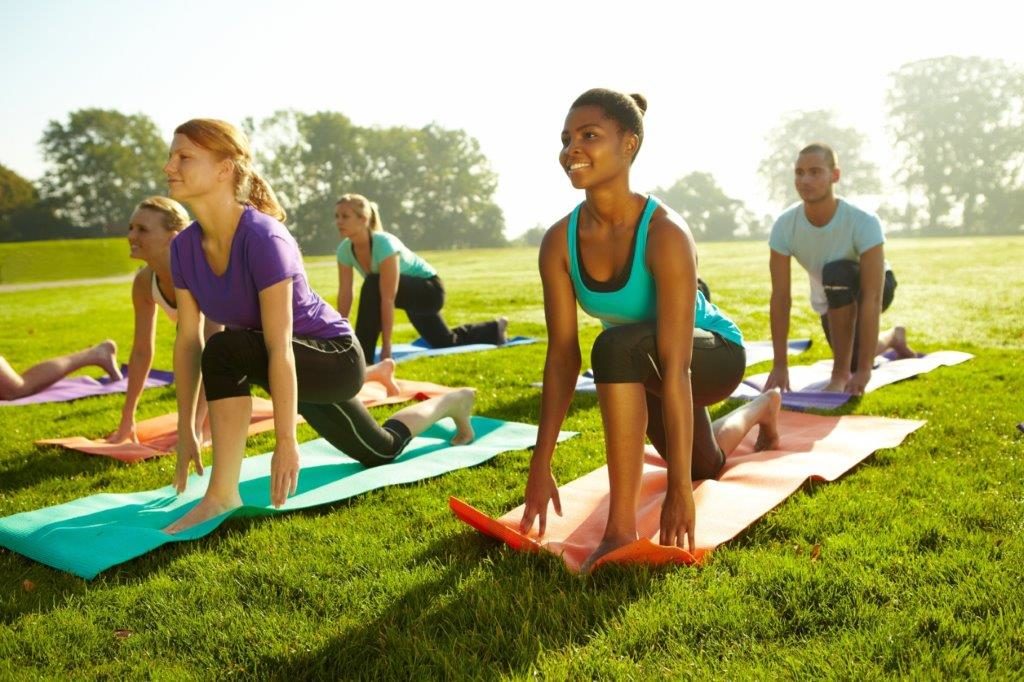
Yoga for mental health: How to calm down with a workout
Yoga has long been an excellent exercise for the body, but did you know it’s also a great activity for the mind? That’s right, that satisfied feeling you get from a good session isn’t just endorphins from the exercise; it’s also yoga itself making you feel calm, relaxed and at ease.
However, while the activity can be amazing for something as simple as winding down after a stressful day, it has even more in-depth applications. In fact, yoga has been seen to have positive effects for people dealing with more severe anxiety and depression, and even more complex issues such as PTSD.
Everyone can benefit from taking some time to focus on their mental health, and yoga is a great way to do that. Here are some of the ways you can do just that, with poses and stretches to get you calm and feeling great, inside and out.
Yoga for stress
First of all, let’s go through some of the more relaxing poses you can do to make yourself feel generally calmer and stress-free. While these are the best options for stress relief, you will probably find that any yoga is good for calming down. It helps you breathe and forget about anything worrying for a bit, which puts you in a good state of mind.
Child’s pose is probably a good place to start. Kneel on your yoga mat and bend forward, reaching your arms out. Bend all the way down until you are sitting on your knees and your forehead is touching the mat. You can stretch your arms out or put them at your sides, whichever is more comfortable.
Another good pose is the seated forward bend. Sit on your mat with your legs straight out in front of you. Gently bend forward at the waist and reach towards your feet. If you’re flexible enough, aim to grab the soles of your feet and place your forehead on your knees.
One of the most basic yoga transitions is moving between a downward-facing dog and and upward-facing dog, and this is another good one to practice. Move between these positions, holding each one for two breaths in and two out. This will help you focus and you will be able to feel the stress flow out of you.
Yoga for anxiety and depression
If you are dealing with a more serious mental health issue, yoga can help relieve some of the symptoms. It helps you focus and calm down, allowing your mind to escape from moments of panic or low mood.
One good option is to move between the upward salute — stand up straight and raise your arms above your head while looking forward — and the standing forward bend, whereby you bend forward at the waist and hold onto the backs of your ankles, trying to rest your head on your knees. Repeating these stretches is a good way to release any tension you’re feeling, and get you breathing in a calm, controlled manner.
Another good pose is tree pose. From standing, raise your right leg and place the sole of your foot on the side of your left knee. Point your right knee out to the side. Any pose like this, where you’re on one leg, helps to give your mind focus as it has to concentrate on balancing. This gives you the ability to calm yourself down, as your thoughts become more ordered.
Standing on your head is also a good option, although be careful with this move. Lean against a wall if you are not confident in your balance. By inverting yourself, you are helping the blood flow through your body and your heart doesn’t have to work as hard. This can be a good way of slowing down your heartbeat, giving you the time to focus on your breathing.
How does it all work?
It might seem like yoga is an odd way to ease mental health symptoms, but the physical benefits it confers can work wonders on your mind. It helps that one of the key elements of yoga is breathing, which is also an important part of calming down when suffering from anxiety or depression.
It also helps move your body from using its sympathetic nervous system (SNS) to using the parasympathetic nervous system (PNS). The former is more of an active system, helping your body in crisis situations. However, it also contributes to anxiety, as it is designed to cause a fight-or-flight response.
This increases the heart rate and the blood pressure, as it is essentially preparing your body to deal with a physical threat by fighting it or running away. In anxiety sufferers, this fight-or-flight response can trigger when there is no threat, causing panic attacks.
Yoga helps to move control of the body away from this SNS, and towards the PNS, which is sometimes referred to as the ‘rest and digest’ system. It causes the heart to slow, and blood flows from the muscles into the stomach and intestines. This is the nervous system’s response to being in a safe place, and triggering it can be incredibly helpful for anxiety sufferers.
Of course, there are many more ways yoga can help with mental health issues. Whenever you’re experiencing low mood, consider yoga as an option to calm yourself down and reach a place of relaxation and safety.




